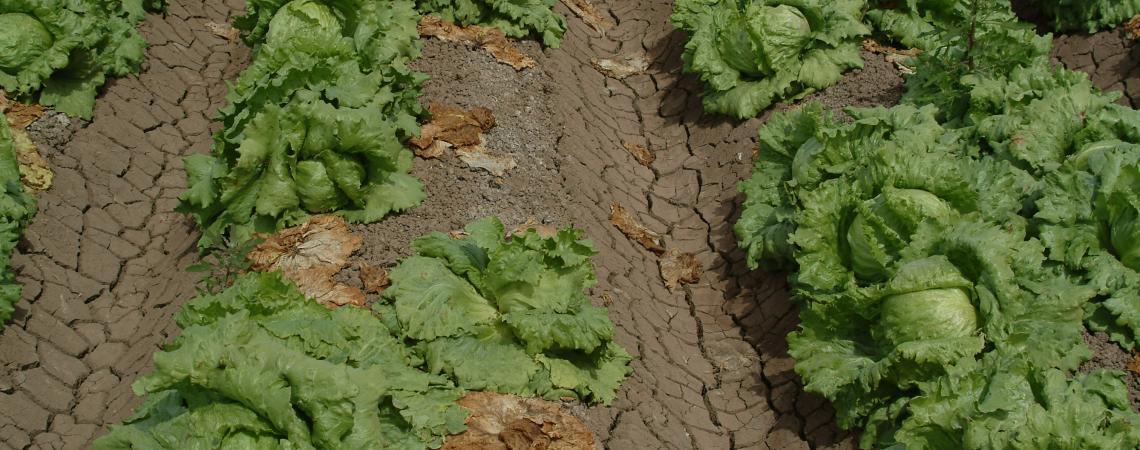
Lettuce Drop
On this page
Connected Pages
Among the important fungal diseases affecting lettuce, lettuce drop caused by Sclerotinia spp., is one of the most common and destructive diseases resulting in yearly losses in all lettuce-producing regions for all types of lettuce (Wu and Subbarao, 2006: Phytopathology 96:1322-1329). Crop losses may vary from 1 % to nearly 75%, and in some cases, entire fields may be lost (Chitrampalam et al 2008. Plant Dis. 92:1625-1634).
Repeated cultivation of lettuce and repeated occurrence of lettuce drop in Arizona and California results in increased accumulation of the lettuce drop pathogens in the soil and increased disease incidence on subsequent lettuce crops. Thus, improved management strategies for lettuce drop, including the development of non-chemical treatments, will have direct benefits to lettuce growers in both states.
Causal Agent
Lettuce drop is caused by two closely related fungi, Sclerotinia sclerotiorum and S. minor. Both fungi produce hard, durable structures known as sclerotia, which function as survival structures and also as disease inoculum in subsequent lettuce crops.
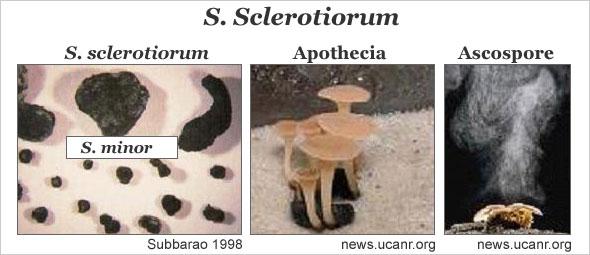
A notable difference between these fungi is in the type of sclerotia produced: S. sclerotiorum produces large irregular shaped sclerotia in moderate numbers whereas S. minor produces small spherical sclerotia but in far greater numbers.
Both fungi are present in the lettuce-growing areas of Arizona and California and infect all lettuce types, but their prevalence in the different production regions is somewhat distinct. In the cooler regions of coastal California, S. minor is the predominant species, whereas, in the much warmer desert production areas of the Yuma and Imperial counties, S. sclerotiorum is the predominant species (Subbarao, K.V. 1998. Plant Dis. 82:1068-1078).
However, the occurrence of S. minor in the desert production areas has been significantly increasing in recent years (M. Matheron, T. Turini, pers. comm.) and is considered an emerging challenge to desert lettuce production. Most importantly, both Sclerotinia spp. are regarded as key pathogens in all areas, limiting production efficiency in fields with a significant infestation.
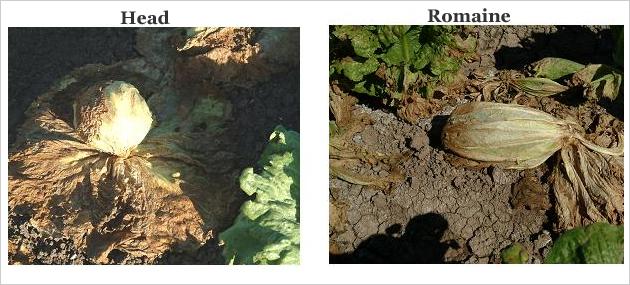
Management Practices
Cultural Control
Cultural control of the disease involves strategies for reducing soil sclerotial populations. Crop rotation to non-hosts can reduce soil populations of sclerotia, but the selection of rotation crop must be carefully selected as both causal agents have wide host ranges. Deep inversion plowing can be used occasionally to move the inoculum deeper into the soil profile. Summer flood solarization has been shown to reduce sclerotial populations in desert production areas. Irrigation management also is effective with drip irrigation resulting in the lowest incidence of disease.
Chemical Control
There are a number of fungicides that are effective against lettuce drop; iprodione, boscolid, dicloran, and others. Most are applied at the rosette stage in banded application targeting the base of the lettuce plant. For control of S. minor, additional applications post-thinning are effective. Before using any product to control lettuce drop, check product labels and restrictions and consult with your local Extension Specialists and Pest Control Advisers.
Biological Control
Considerable research has been conducted on evaluating biological control agents to manage Sclerotinia disease in a number of cropping systems. Trichoderma spp., Sporidesmium sclerotivorum, and Bacillus subtilis have been evaluated against Sclerotinia spp. but have not performed well under field conditions (Chitrampalam et al 2008, Plant Dis. 92:1625-1634).
In striking contrast, Coniothyrium minitans has shown much higher efficacy. Two applications of the recommended rate of C. minitans (Contans) (2lb /acre)one at planting and one at post thinning outperformed commonly used chemical fungicide Rovral (Iprodione) for controlling lettuce drop caused by S. sclerotiorum. However, C. minitans had less effect on S. minor (Chitrampalam et al 2008, Plant Dis. 92:1625-1634).
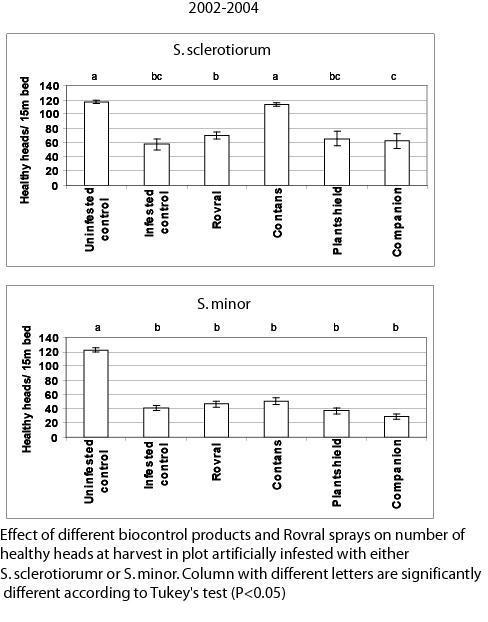
Studies were continued to develop a biocontrol strategy mainly with Coniothyrium minitans to manage lettuce drop caused by S. minor in lettuce production areas of both Yuma County, AZ and Imperial Co, CA. Results from this study revealed that lettuce drop caused by S. minor could also be successfully managed with Coniothyrium minitans in a desert agroecosystem. However, the rate of application of C. minitans required to manage S. minor was much higher than that required to control S. sclerotiorum (2lb/acre).
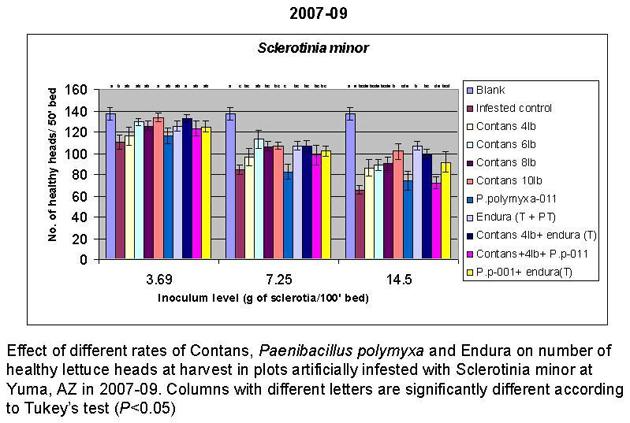
Breeding for Resistance
There currently are no commercially available cultivars with substantial resistance to lettuce drop. However, partial resistance has been documented in select breeding lines and in a number of wild lettuce species. These lines will be important in the development of Sclerotinia-resistant lettuce cultivars.
